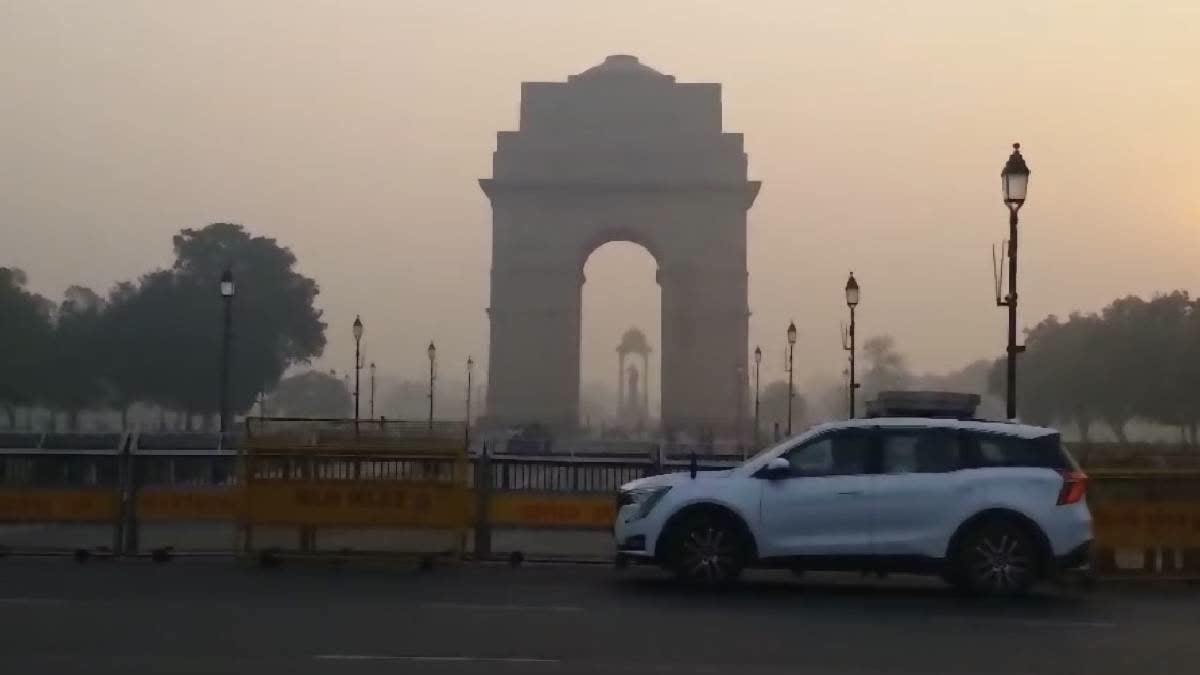New Delhi: The national capital, Delhi, is once again engulfed in a thick blanket of smog, with pollution levels reaching alarming levels. As the term 'smog' combines smoke and fog, aptly describing the choking, hazardous atmosphere that now characterises the city. At a time when Delhi’s air quality plunged to critical levels, the city’s residents are facing severe health risks. Alongside, people in major states of northern India are also exposed to health hazards induced by alarming levels of air pollution. The air quality index (AQI) on Wednesday reached 359, firmly placing Delhi's air in the very poor category, with some areas hitting severe levels, casting a heavy gloom over the entire region.
Health hazard and vulnerable population
The health impacts of Delhi’s worsening air are dire. Rising levels of particulate matter, especially PM10 and PM2.5, pose severe health risks, particularly to those with heart or lung conditions, pregnant women, children, and the elderly. These tiny particles are small enough to penetrate deep into the lungs, potentially causing respiratory and cardiovascular issues. A key contributor to this air pollution is the lingering smoke from Diwali firecrackers, which, despite a ban, were set off across the city, worsening pollution levels days later.
Sharing his experience in Delhi, an Ola driver said, “I’ve only been in Delhi for a few months, but I have to wear a mask whenever I drive. Firecrackers during Diwali made the situation worse, and now black clouds are everywhere. When I pass through streets, there’s just smoke lingering around.” His remarks reflect the visible consequences of pollution that all Delhiites face daily.
A freelance artist near India Gate added, "I come here every day, and the pollution is unbearable. It causes a burning sensation in the throat. As winter progresses, it’s only going to get worse. Pollution from nearby states, like Punjab and Haryana, flows into Delhi. The government really needs to take action.”
Emergency measures, locals' grievance
Despite specific action plans for identified pollution hotspots by authorities in the city, little difference seems evident on the ground. A local auto driver said, “Pollution levels have risen so much that my work is affected. I tell everyone to wear a mask if they need to go out.”
The Delhi government has rolled out emergency measures, including shutting down primary schools temporarily, restricting vehicle use, and deploying anti-smog guns in high-pollution areas. However, these efforts appear insufficient, as air quality remains firmly in the “very poor” to “severe” range across Delhi and NCR. While short-term measures can mitigate some risks, they fail to address the root causes of Delhi’s pollution crisis.
Stubble burning and seasonal challenges
Satellite data paints an equally grim picture, recording 861 instances of stubble burning across agricultural states like Punjab, Haryana, Madhya Pradesh, Rajasthan, and Uttar Pradesh. This practice releases enormous amounts of particulate matter into the atmosphere, worsening air pollution across the Indo-Gangetic plain. As temperatures drop and wind speeds slow with the onset of winter, pollutants linger in the atmosphere, further deteriorating air quality.
Standing near India Gate, one can feel and see the toxic haze hanging in the air. This annual crisis underscores a recurring failure to address the root causes of pollution, especially at the onset of winter. In Delhi, pollution levels are already hovering at dangerous levels in areas like Anand Vihar, Mundka, Rohini, and Narela. According to the Central Pollution Control Board (CPCB), AQI levels in six major hotspots, Ashok Vihar, Anand Vihar, Bawana, Wazirpur, Jahangirpuri, and Vivek Vihar, are among the worst in the city. In Anand Vihar alone, the average AQI over the past three days was a staggering 431, indicating extremely hazardous air.
As winter sets in, it’s clear that more sustainable, long-term solutions are needed to tackle this annual pollution crisis. Addressing stubble burning through incentives for farmers, promoting sustainable farming techniques, and investing in renewable energy sources to reduce reliance on coal are essential steps. Moreover, public awareness campaigns are needed to discourage firecracker usage abd personal vehicles to emphasize the importance of adhering to pollution control measures.
The pollution crisis in Delhi is environmental issue as well as public health emergency that affects millions. With severe air pollution posing serious health risks, particularly to vulnerable groups, it’s imperative for authorities and citizens alike to work toward a cleaner, safer future. As Delhi moves deeper into winter, the call for concerted action appears urgent.



